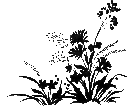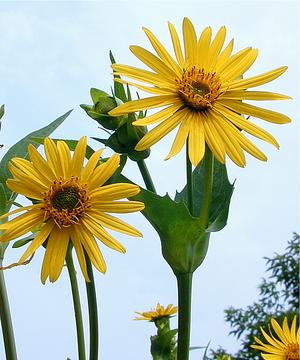 |
The Preserve |
News and Events |
Natural History |
The Trail |
Monitoring |
Restoration |
Library |
Organization |
|
Todmorden Mills Wildflower Preserve
|
Nature NotesYour nature guide for the week July 19-July 25The metallic drone of Cicadas singing from the trees signals the arrival of high summer.Wildflowers
In the meadow, almost overnight it seems, the Cup Plant has bolted to over two metres high and begun to flower. While the bright yellow flowers are noteworthy, it is some of the vegetative traits which are most interesting. Wade into the meadow and check out the stout square stems and feel the coarse leaves which are as rough as sandpaper. Inside the base of the paired leaves, look for rainwater which has collected since the last thunderstorm rolled through. The yellow-flowered Fringed Loosestrife continues to bloom in patches throughout the wetter woodland areas of the Preserve. This habitat is also preferred by the jewelweeds, and this week an introduced species, Himalayan Balsam, began producing its showy pink flowers. MammalsThe regularity with which Cottontail Rabbits are being seen in the meadow and around the historic buildings suggests that numbers are high right now. Survival of young might be good this year because the cool summer has favoured clovers and other favoured rabbit foods. The best opportunity to see rabbits is early morning and late afternoon, but on overcast days you might see them at any time of day. Wild FruitWalk south from the pond and you wind through a swamp then ascend briefly, flanked by the arching canes of fruiting brambles. At first glance, the black fruit looks like blackberries, but pluck one and it pulls off leaving a hollow centre. The berry is soft and lightly covered in hairs --it's a Black Raspberry. Wild Red Raspberry is also present in the Preserve. Raspberries all produce flowers and fruits on second-year canes, but whereas the Red Raspberry canes are covered in short, bristle-like thorns, the canes of Black Raspberry are smooth and they carry fewer, larger thorns. SnakesThe wooden buildings, railing fences and stone walls around the historic site at Todmorden provide excellent sunning sites for the resident Garter Snakes. You are more likely to encounter one in the morning as it warms up before heading out to hunt grasshoppers and small frogs. But quiet stealth is essential--usually your only clue is a rustling sound and quick movement as one disappears into cover. Individual Garter Snakes vary in their overall body colour, but the pattern of three yellow stripes running the length of the body is diagnostic. InsectsThe welcome buzzsaw drone of Cicadas has finally begun, and we are headlong into high summer. Males sing from trees at the edge of meadows and fields. Mosquitoes remain quite abundant in the woodland trail, particularly through the swamp areas, and bug repellent is recommended. Nature Notes is researched and written by Mike Dennison and Alejandro Lynch, and is published each week by Hopscotch Interactive (www.hopscotch.ca). In addition to this online version, Nature Notes is available as a print-friendly PDF and as a text-only email version. Please contact Mike Dennison to receive these, or for more info (tel: 416-696-7230, email: dennison@hopscotch.ca). |
| Copyright © 2003-2004 Todmorden Mills Wildflower Preserve |
